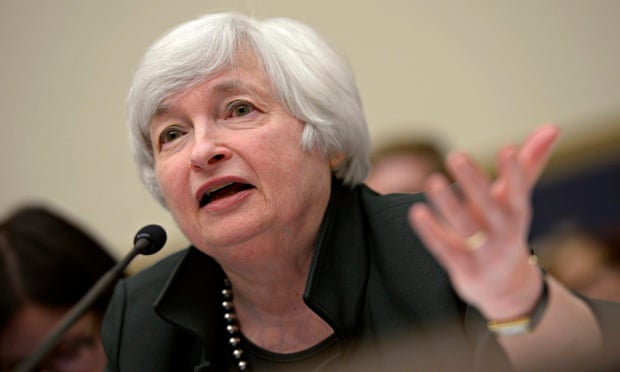
The moment US central bank chief Janet Yellen presses the button will be a massive economic event. The prospect that higher interest rates in the world’s largest economy could come this year has already sent the dollar surging against the pound and euro. It has also fuelled fears of a meltdown in countries that have borrowed heavily in the US currency.
Borrowing is inherently risky, all the more so when the interest rate can change at short notice. Higher costs for those that have borrowed in dollars could cripple companies in Brazil and Turkey that were enticed by cheap credit to fund a new factory or office building, or just to pay the wages.
At the International Monetary Fund’s spring meeting last week, chief economist Olivier Blanchard dismissed these concerns, arguing that companies may have hedged their position, while investors and finance ministers were well prepared. But a succession of market shocks in the last two years has convinced many in the financial community that a bigger crash is coming. There have been violent movements in currencies, bonds and commodity prices, especially crude oil and metals. A rise in US interest rates could add to this already volatile situation and drag stock markets towards another sudden crash.
The IMF discussed the context in which another financial crash could occur in itslatest financial stability report. It highlighted how any shock can send investors fleeing; with only sellers in the market, the price keeps plunging until someone believes it has gone far enough and starts buying.
The nervous state of markets these days means there is generally either a surplus of buyers or a surplus of sellers; only rarely have we seen periods of calm with roughly equal numbers. Last January, for instance, the Swiss franc soared an unprecedented 30% after the central bank conceded that tracking the ailing euro was no longer possible.
The previous year, markets had been rocked by the first hint from the US that it would end the era of ultra-cheap credit. It happened after former Fed boss Ben Bernanke let slip that he might stop pumping funds into the US economy through quantitative easing. The “taper tantrum” – referring to the premature “tapering” of QE – sent shock waves through world markets and forced a clarification from the Fed to steady the ship.
The IMF’s financial stability report discussed the potential for Taper Tantrum II. The scenario was worse, yet the warning was described by Larry Fink, boss of BlackRock, the world’s biggest private investment fund, as too optimistic. He is concerned about the European insurance industry, which must pay returns on pensions and other products at a time when the European Central Bank has been driving interest rates in much short-term government debt below zero; in other words, rather than earning interest on government bonds, insurers are paying to park their money in such assets. How could they survive for long under this regime, he asked. The IMF posed the same question, but again expected everything to work out for the best, somehow.
Blanchard, who runs the economic unit and was by far the most sanguine IMF forecaster, mentioned Turkey as a potential victim of a US rate rise, as it would be likely to suffer an outflow of funds to the US as well as facing higher borrowing costs. Yet it could be saved, he thought, by negative rates in the eurozone that would be likely to trigger a flight of funds from Italy, Austria and Belgium to Istanbul.
But while it is almost certain Turkey, Brazil, Russia and many others that have seen their businesses and governments borrow heavily in dollars to maintain their spending will suffer higher borrowing costs courtesy of Yellen, it seems unlikely funds in Europe now would opt to send billions of euros to banks in developing world economies such as Turkey, even when the returns are higher. That is because Turkey would be a risk too far when there are safe havens such as the US starting to offer a return on totally safe investments like Treasury bonds.
José Viñals, who oversees the IMF risk monitor, reserved his deepest concerns for the previously fast-developing nations that have become vulnerable to volatile financial markets.
“Strains in the debt repayment capacity of the energy sector may become more evident in Argentina, Brazil, Nigeria and South Africa, as well as in countries reliant on oil revenues, such as Nigeria and Venezuela,” he said. “The sharp dollar appreciation entails additional risks for corporates and countries with large foreign currency debts.”
Maybe Yellen will look at US unemployment and consumer spending data at the Fed’s meetings this month and in mid-June, and decide America remains too weak to withstand a rate rise. If she does, plenty of countries will cheer. Yet all the signals point towards a rise, with potential turmoil ahead